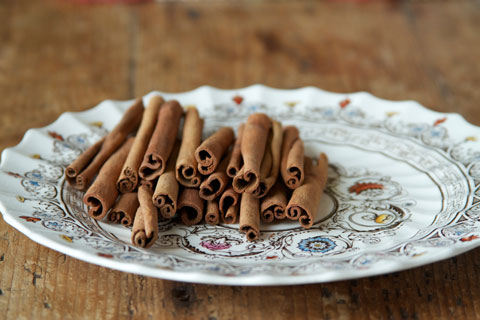
SPICE WITH SERIOUS HISTORY Cinnamon: flavoring meat since mummies. |
Learning to cook with exotic ingredients is exciting, but what I like even better is seeing someone use an extremely familiar ingredient in a completely new way. It's both uncomfortable and invigorating. One minute you think you know something about an ingredient, and then the next minute you see that you don't know the half of it. This happened last month when I was cooking with a Somali woman in the Riverton neighborhood of Portland.
She was making a dish her family eats often for lunch: spiced rice topped with beef. In Somali, this is called bariis iyo hilib lo. Translation: rice and meat beef. She was sautéing diced onion in oil and adding freshly ground spices: coriander and cumin, a crushed chicken bouillon cube, and salt, and then she added ground cinnamon. If I hadn't had a social filter, I would have said, "Ah! What are you doing? Cinnamon is for cinnamon buns, not beef dishes!"
This wasn't the first time I couldn't believe what someone from another culture was doing with cinnamon. An Afghani woman had put cinnamon in her lamb. Indians put cinnamon in their prawn curry, chicken biryani, and chicken tandoori. An Iraqi woman boiled a chicken with a cinnamon stick. An Eritrean woman put cinnamon in the spice mixture that went in her spicy chicken stew. So this has basically been the trend. Immigrants put cinnamon in their meat dishes and I, the American, freak out. At home, one of my hands has to force the other to put the cinnamon in these dishes.
Why am I so resistant to cinnamon going savory? As I've learned from cooking and tasting these immigrant dishes, cinnamon by itself is not sweet. It is mildly spicy, aromatic and drying. It activates the middle of the palate, and works well with other middle flavors like cloves, cumin, and meat. In the Indian and Eritrean dishes, the cinnamon has a stabilizing or grounding effect on the zippy heat of super-hot chilis. In the Somali beef and rice dish, the cinnamon, cumin, coriander, and chicken broth lend substance and body to the meal. It's so much better with spices than plain!
For context, cinnamon was around long before the American psyche. According to one theory, traders were floating rafts of bark from Indonesia to east Africa as early as 2000 BCE. Then from east Africa, cinnamon traveled up through ports in the Red Sea and over land to Alexandria, from where it was shipped to other ports along the Mediterranean. Cinnamon traders were likely Arabs, but after 1518, the Portuguese, Dutch, and English cut out the Arab middlemen in the cinnamon trade by going themselves to an island off the coast of India (Sri Lanka), where cinnamon grew like gangbusters. Almost as soon as Western Europeans got their hands on their own direct supply of cinnamon, they also started producing their own supplies of a new ingredient, sugar, in the New World. From what I understand, it was right then that the two sides of cinnamon diverged: sweet and savory.
I'm humbled to realize that cinnamon had something like a 3500-year culinary history before sugar was even discovered! Cinnamon Toast Crunch is just the most recent tip of the iceberg. Underneath, I'm pretty sure, are millennia of cinnamon and meat. ^
For the recipes, and info on a May 10 Somali cooking class, visit ImmigrantKitchens.com.